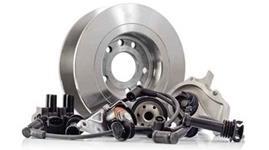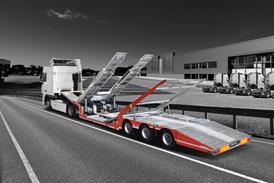Car drivers in Russia are waiting longer for their cars to be repaired, with delays stretching up to six months because of a crippling shortage of spare parts.

Among the brands affected by the shortage are China’s Changan, BYD and FAW, according to Alexander Strelnikov, director of RusTransChina, a Moscow-based logistics company specialising in importing automotive goods from China. To some extent, the problem is a natural consequence of a surge in sales of Chinese vehicles in the Russian market in the last few years, Strelnikov reported.
In the first half of 2024, vehicle sales in Russia totalled 713,300, which was 75.9% higher compared with the previous year. Chinese brands accounted for 58.2% of this figure, up from 43% in the previous year.
Nine of the top-10 most popular models on the Russian market are Chinese, according to Real-Time, a Moscow-based analytical service. Haval is in the lead this year, with 82,200 finished vehicles sold during the first half of 2024, 113% more than in the previous year.
Russia has significantly strengthened its position as the key export market for the Chinese finished vehicles in 2024, the analyst estimated.
However, overall Chinese finished vehicles represent only 4% of all registered vehicles in Russia, Avtostat, another Moscow-based think tank, calculated.
Payment problems
The unravelling spare parts crisis can also be partly attributed to the difficulties importers are having in making payments for the parts delivered by Chinese automotive suppliers.
“With each passing day, there are fewer opportunities for transfers [to China], and the situation is getting worse,” said Dmitry Klataevsky, director of the logistics company Japan Transit. Klataevsky said the crisis is taking a heavy toll on operations, leaving the company with storage units full of unpaid-for finished vehicles.
However, other market players say that the payment issue has become less pressing in the last few months. For example, payments to China are increasingly being made through banks in the United Arab Emirates (UAE), Turkey, Kyrgyzstan, Kazakhstan, Armenia, Belarus, Vietnam, Hong Kong and Singapore.
The Russian Association of Automotive Dealers has recently warned that from September 2024, the automotive market could see a 10% hike in the price of Chinese automotive imports. The hike was also attributed to the unsolved payment issue, as money can get stuck in the Chinese banks for up to two months, and alternative settlement options come at a certain cost.
Against this background, some market players were reported to be considering switching to barter trade. The first barter deals could happen in the autumn of 2024 and involve Russian exports of agricultural products to China. Automotive products are seen as one of the options China can offer in exchange.
Adaptation in progress
The Russian aftersales market has experienced numerous difficulties because of a radical switch to Chinese goods in the last few years.
“Some mechanics report that the same part may fit one finished vehicle and not another, even if both finished vehicles are the same model. This is because of differences in production and quality control at the factories,” Strelnikov said.
Besides, supply chain turbulence means the Russian market is flooded with counterfeit spare parts of unknown origin.
Maxim Rakitin, an independent automotive market analyst, estimates that nearly 35% of spare parts available on the Russian market are counterfeit. This figure doesn’t include non-original spare parts, which are commonly also imported to Russia. Rakitin said that counterfeit spare parts are, in fact, fakes, which carry certain risks for the vehicle owner.
This figure aligns with a study conducted by Gruzdev Analyze, a Moscow-based consultancy, according to which 40% of repair service providers acknowledge the wide presence of counterfeit spare parts in the supply chain. The analysts calculated that the share of counterfeit spare parts in the country has become the highest since at least 2007.
The crisis is also reflected in prices. Fit Service, a Russian chain of auto repair services, calculates that during the first half of 2024 the average cost of vehicle repair in Russia jumped by nearly 30%. However, several factors contributed to the upward price rally, including the general aging of the Russian automotive fleet.
While in the past, Russian auto owners opted to buy a new vehicles in the case of a major accident, now they often decide in favour of a repair, the Fit Service analysts explained.

























![Global[1]](https://d3n5uof8vony13.cloudfront.net/Pictures/web/a/d/s/global1_726550.svgz)













No comments yet